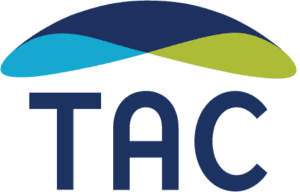Drug overdose is now the leading cause of accidental death in the United States, with staggering numbers of additional deaths occurring every year due to tobacco use, alcohol addiction, and other substance use disorders (SUDs). It is essential to expand access to treatment, and there is growing recognition that integrated care — in which SUD services are incorporated into existing primary care settings — must be a key component of this effort.
Knowing that value-based payment (VBP) systems are one tool used by health care payers to promote system-wide changes, TAC partnered with the Center for Health Care Strategies to find out how states and health plans are beginning move toward VBP as a way to encourage SUD treatment in primary care. To learn more about the definitions and framework that we relied on, and to find greater detail about the practices highlighted here and considerations for the future of this promising trend, read our full paper: “Exploring Value-Based Payment to Encourage Substance Use Disorder Treatment in Primary Care.”
Health Plan Innovations
For SUD treatment in primary care to succeed, providers must be prepared to administer medication-assisted treatment (MAT). To overcome provider hesitation to take this step, two of the community-based Medicaid plans we interviewed, the Central California Alliance for Health (CCAH) and Partnership HealthPlan of California, award primary care providers (PCPs) a cash bonus when they become “waivered” — i.e., licensed to prescribe buprenorphine. In recognition that patients being treated with SUD medications often require more services and management than others, CCAH also allows waivered PCPs, along with the nurse practitioners and physician assistants in their practices, to bill for consultative services related to SUD care.
To encourage more sophisticated payment methods for SUD services, the federal Medicaid Innovation Accelerator Program has created clinical pathways and rate tools for MAT. Similarly, the American Society of Addiction Medicine and the American Medical Association recently released a concept paper on patient-centered opioid addiction treatment (P-COAT), a new alternative payment model that supports office-based treatment using buprenorphine or naltrexone. The P-COAT model includes a one-time payment for the initiation of MAT for opioid use disorders, as well as an ongoing monthly payment to help providers coordinate outpatient, psychological, and social services for patients who have successfully initiated treatment.
States Taking Action
There are state-level examples of such approaches, too. Pennsylvania’s Centers of Excellence for Opioid Use Disorder receive $500,000 annually for two years from state funds to meet specific requirements in coordinating physical and behavioral health services, such as having defined referral standards, tracking and reporting quality outcomes, and participating in a learning network. The State of Virginia has actively redesigned its system of care for individuals with SUDs through its Addiction and Recovery Treatment Services program, expanding Medicaid beneficiaries’ access to evidence-based addiction services — including in primary care settings. Virginia makes enhanced payments to select providers who work with patients receiving medication-assisted treatment for an opioid use disorder.
Paying for Performance
States and managed care organizations are using pay-for-performance arrangements to encourage providers to incorporate SUD screenings and services into primary care. UPMC for You, a Medicaid managed care organization in Pennsylvania, evaluates providers both on screening for and documenting co-occurring medical conditions and secondary symptoms, and on ensuring that a high percentage of patients with SUDs who are new to treatment receive a behavioral health assessment by a licensed drug and alcohol counselor. The health plan also tracks how often providers successfully coordinate care with patients’ behavioral health providers. Partnership HealthPlan of California, too, has implemented process measures focused on providers conducting thorough screenings — in this case, to track important indicators in patients taking medication for chronic pain. The Oregon Health Authority uses incentive and challenge pools to financially reward those of the state’s Coordinated Care Organizations that meet key target measures, including alcohol and drug misuse screenings.
The First Steps
Interest is growing in integrating SUD services with primary care, fueled by the determination to improve treatment access for individuals with unmet needs. Many payers are using financial incentives to increase capacity in the primary care network to provide screenings and treatment, as well as referrals to more advanced care as appropriate. States and health plans are still in the early stages of developing more sophisticated VBP arrangements for substance use disorders in primary care, but there are valuable lessons to be learned from those that have already taken preliminary steps.
Our thanks to the Melville Charitable Trust, whose support made this exploration possible.


